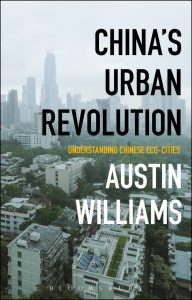A Disparaging Remark

by Austin Williams
Sir Geoffrey Vos, head of Civil Justice in England and Wales, and Master of the Rolls stated earlier this year that ADR should drop the “A” and “no longer be viewed as ‘alternative’ but as an integral part of the dispute resolution process.”
Unfortunately, within the world of architectural education – and construction training more broadly – the letters ADR are as likely to refer to the strategic software development protocols of Architectural Decision Records as any reference to legal dispute settlements between parties. Indeed, for many architectural students and construction industry interns, the letters might conjure up the Australian Design Review or Advanced Design Research or university Achievement and Development Reports.
The sad fact is that students in many undergraduate and postgraduate architectural programmes in the UK are ill-served by teaching in legal precedent, contract law, professional practice, tortious claims or litigation procedures. Perhaps that is because, if more early-career architectural assistants understood what a legal minefield they were entering they might decide to go off and do something more creative with their time.
Of course, it is only expected that architectural education prioritises design. Over 50 percent of the marks allocated to each annual course structure are based on work in the design studio. Students are encouraged to spend their time in workshops, or on study trips exploring and appreciating the aesthetic formulation of various exemplars and studying the excellent design of others in order to understand a range of typologies and forms. Of course, every good student knows of the Roman architect, Vitruvius – even if they haven’t read him – and will be able to recite the triumvirate necessary for a well-designed building: commodity, firmness and delight. In simple terms, the “delight” is equated to the building’s attractiveness, i.e. its design, while “commodity” refers to the building’s functionality, and “firmness” is the nuisance business best left to an engineer, to make the thing stand up.
This, after all, is a profession whose name derives from “archi-tectonics”: implying that a building ought to have an organized and unified structure bringing many facets together to make a whole. And yet, the unappealing stuff of firmness, structural soundness – regulatory compliance if you like – is still the poor relation. The legal, juridical and litigious aspects of the subject are barely known, nor for that matter do architecture departments want to know about them. After all, getting sued is the ugly side to a beautiful profession. Why examine actionable matters? Why give the time of day to contentious liability when architects can instead see themselves as social saviours. But the pesky realities of everyday practice won’t go away.
In the last few years, the profession has faced a barrage of changes. The legal frenzy of the Building Safety Act, updates to Approved Documents, planning law, fire legislation and much more have been visited on the education sector. Consequently, the regulatory bodies overseeing architectural education have compounded the industry’s confusion by insisting on compliance with little regard for the prevailing political and economic uncertainties de nos jours.
For example, demanding that architects demonstrate competence seems straightforward enough until you realise that there is no definition save for the cyclostyled compliance certificates from a number of entrepreneurial and hastily-registered compliance consultancies. The Architectural Registration Board, which was given large wads of cash (by a government that relies on outsourcing decision making to organisations that promise that they’ll spend it wisely), is now interfering in university curricula with mandatory schemes purporting to clarify fire and life safety issues. In reality, it has little regard for the day-to-day problems of an economically-squeezed profession.
The intrusion into education by third-party environmental ideologues has further muddied the water. Fire and life safety on one hand, but flammable timber/bamboo walls and thatch/green roofs on the other. And zero guidance on liabilities. You’re on your own.
The Encyclopaedia Britannica claims that architects’ “professed aim is to make a beautiful object.” Of course, that’s what all architecture department’s want their students to present at the “end-of-year” show, but actually such an object still requires a knowledge of many aspects beyond structure and design. It includes a broad understanding of sociology, politics, energy efficiency, regulatory matters, history… and yes, the law. That’s a lot to cram into a degree curriculum, and so if you can fit in some basic understanding of JCT contracts and insurance liabilities, you’re doing well.
In my defence, Kingston School of Art is quite good at instilling basic professional outlooks and explaining ethical duties at the undergraduate stage. Our Masters programme develops this further, culminating in my Part 3 course that goes the whole hog. We spend a great deal of time exploring regulations, case law, negligence and disputes arising. Students are encouraged to sit in the public galleries inside the Royal Courts’ or other criminal court courtrooms – they don’t, of course, but they should, and we have had speakers from the House of Lords, experienced practitioners describing failed projects, legal experts, contract lawyers and ADR professionals. We also run a series of free-to-air podcasts with experts on a range of subjects: too many to include within the time restraints of the course.
If our students emerge from their studies with a decent grounding in the practical arts of diplomacy and ethical clarity; understanding the boundaries of litigation, a knowledge of some of the pitfalls and penalties of the profession, and the merits of the various means to tackle disputation and how to avoid escalation, there is hope for the profession yet.
.






